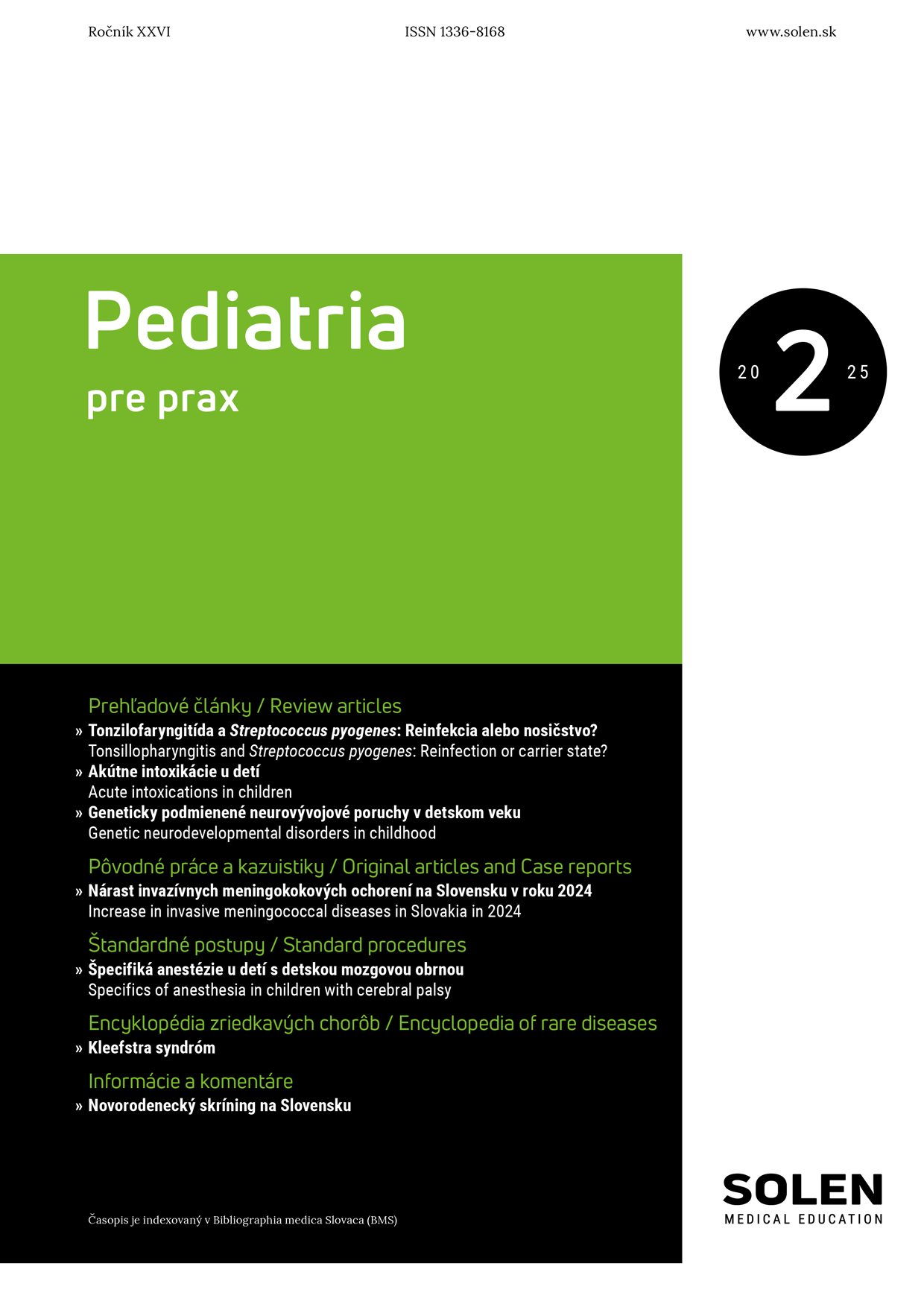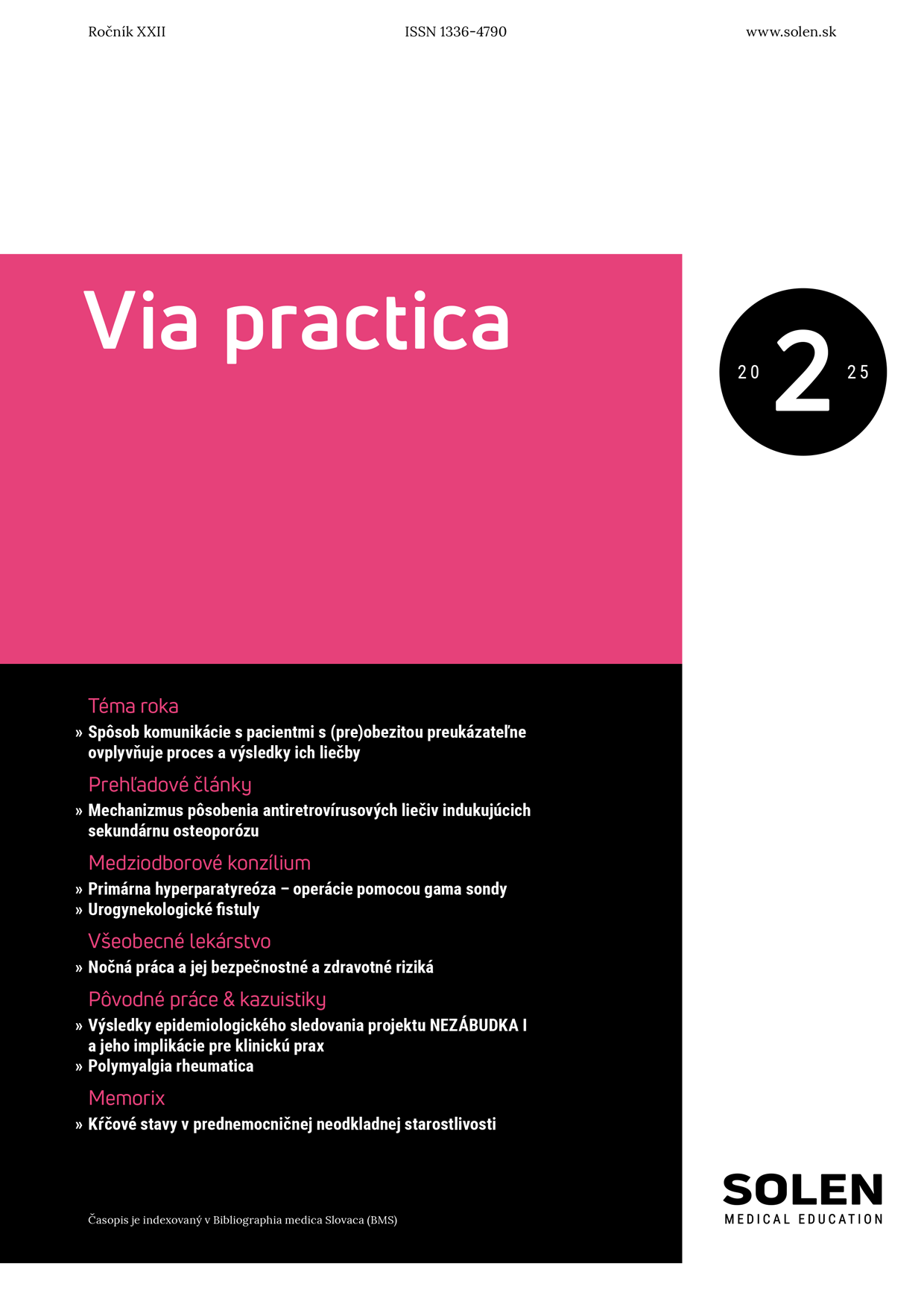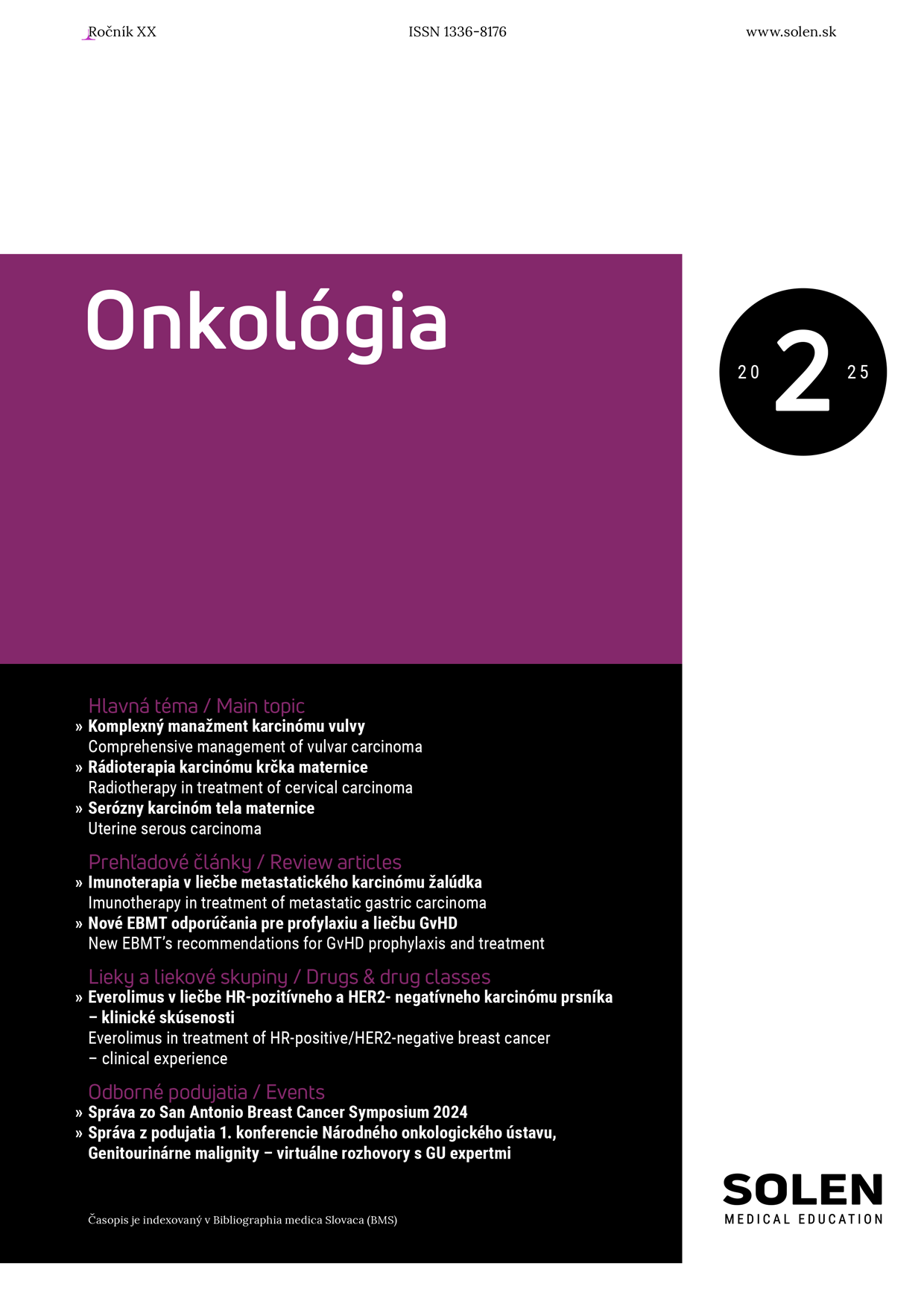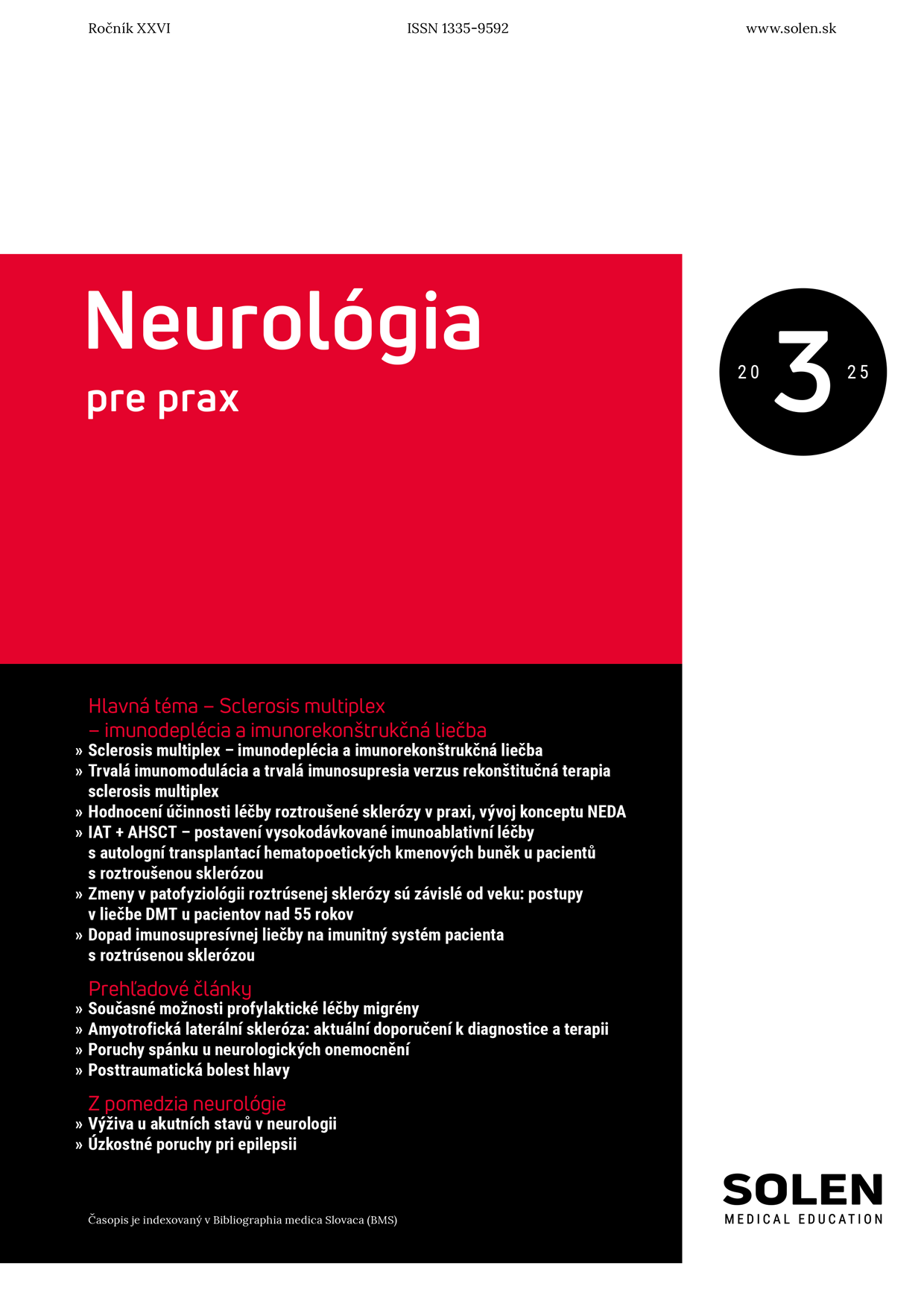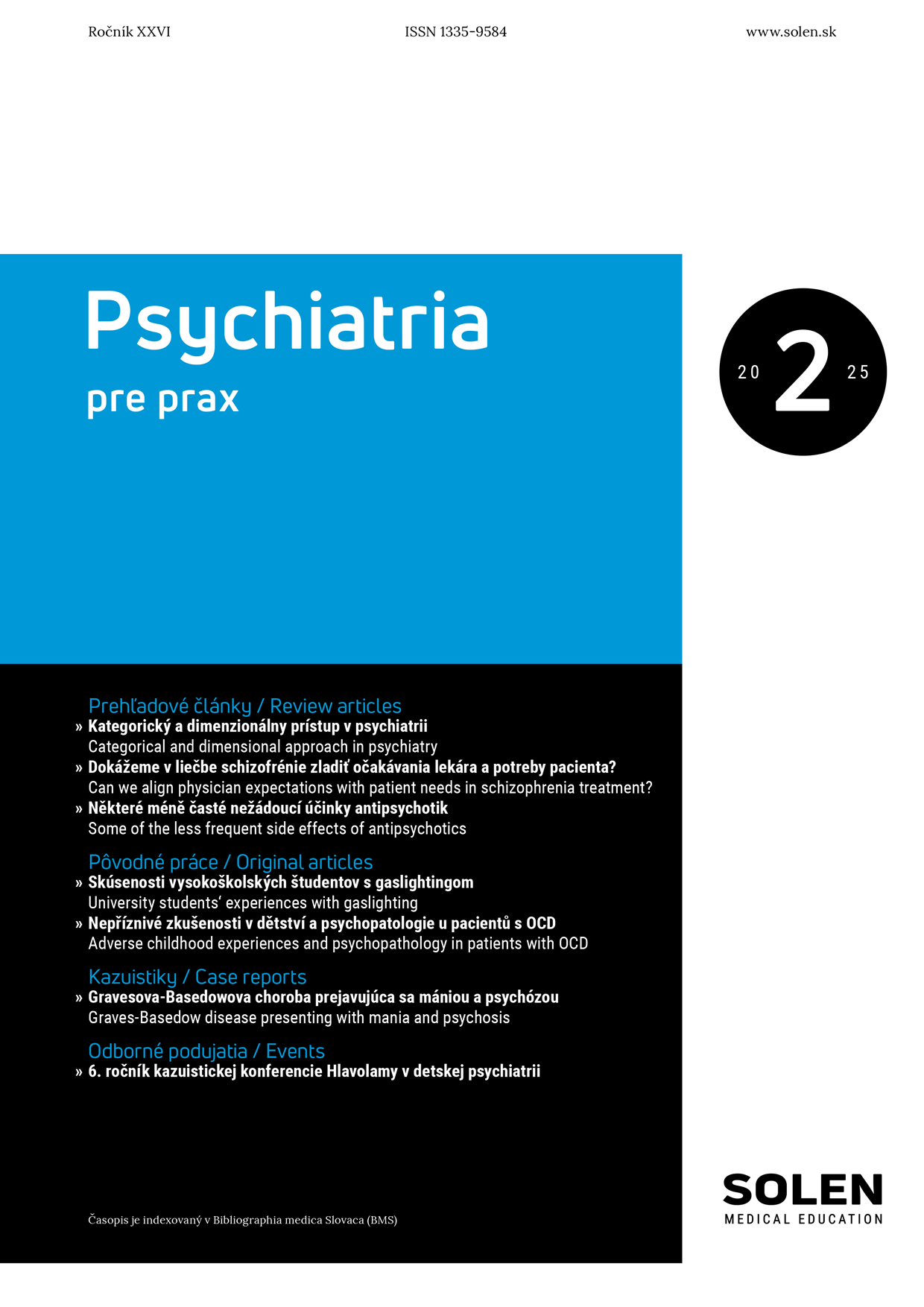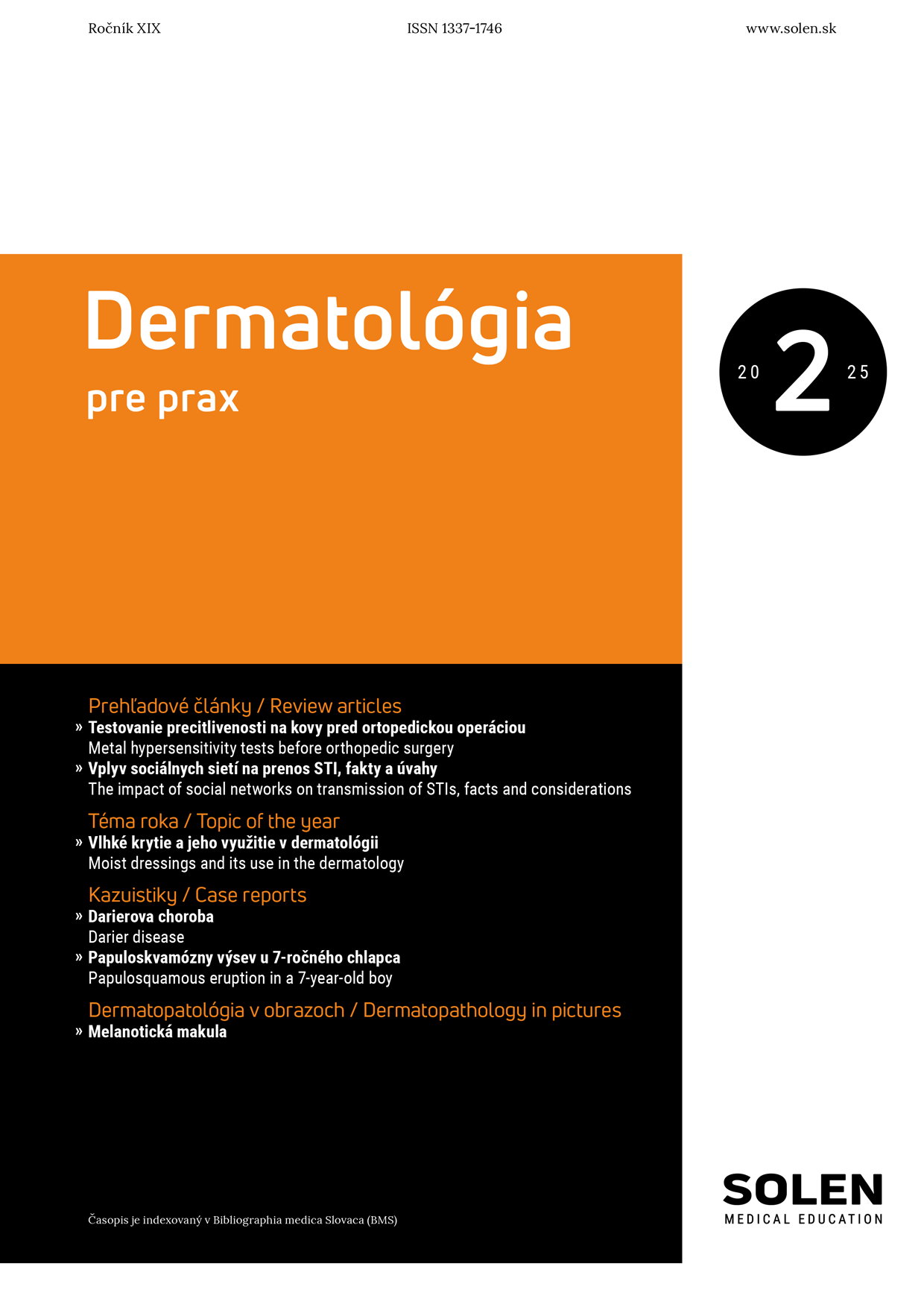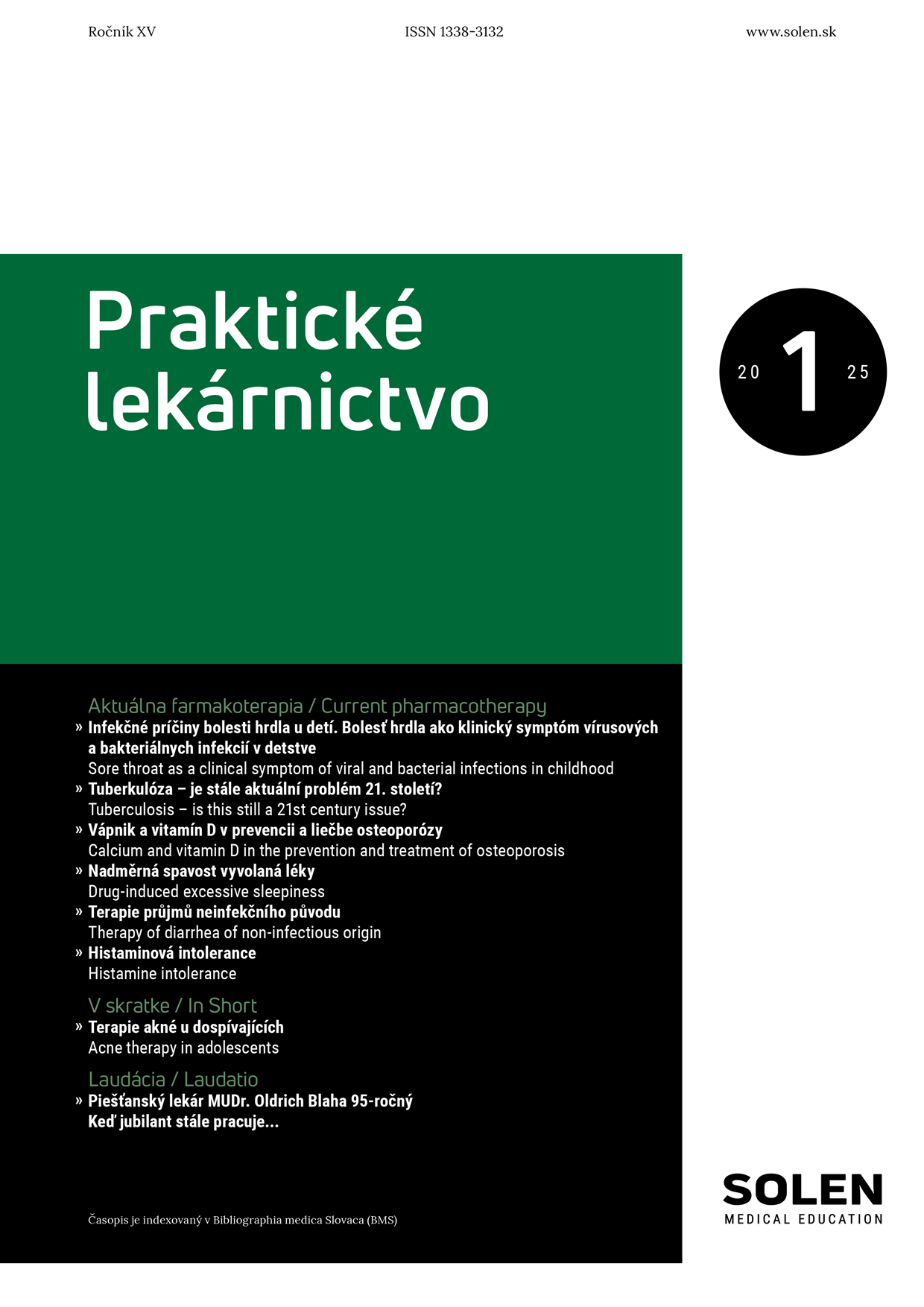Neurológia pre prax 5/2015
Varicella, herpes zoster, complications and postherpetic neuralgia, prevention
The varicella-zoster virus is the only virus that can cause two different diseases: chickenpox (varicella) and shingles (herpes zoster). Primary infection is characterized by a generalized vesicular eruption on an erythematous base of the skin and the mucosa. Endogenous infection is manifested by a vesicular eruption in a herpetiform pattern along the course of one or more nerve roots, the dermatomes. Primary infection is typical for childhood, causing chickenpox. It most commonly affects children aged three to six years. During the period of primary infection, the virus travels along the sensory nerve from the skin to the appropriate ganglion where it remains in a latent state. Herpes zoster occurs as a result of reactivation of latent viruses. It is an inflammatory disease of the posterior horns of the spinal cord or of brain cells with skin involvement. Postherpetic neuralgia that is often treatment resistant is the most frequent complication. The best way to prevent this complication is early diagnosis and treatment. Since April 2014, vaccine against herpes zoster has been available in the Czech Republic as the first among central and eastern European countries.
Keywords: varicella-zoster virus, varicella, herpes zoster, postherpetic neuralgia, pain, antiviral drugs, prevention.


